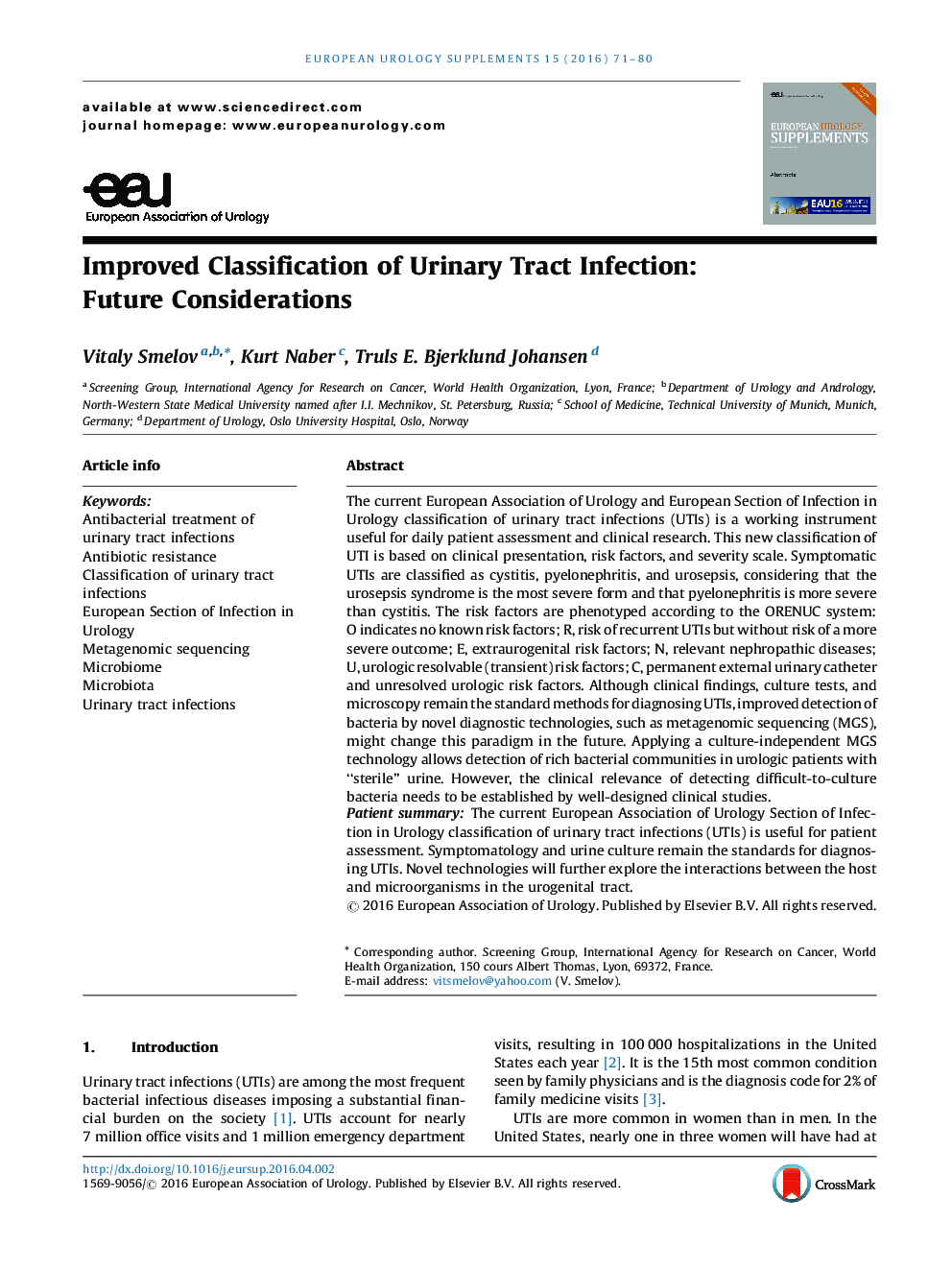| کد مقاله | کد نشریه | سال انتشار | مقاله انگلیسی | نسخه تمام متن |
|---|---|---|---|---|
| 3930579 | 1253268 | 2016 | 10 صفحه PDF | دانلود رایگان |
The current European Association of Urology and European Section of Infection in Urology classification of urinary tract infections (UTIs) is a working instrument useful for daily patient assessment and clinical research. This new classification of UTI is based on clinical presentation, risk factors, and severity scale. Symptomatic UTIs are classified as cystitis, pyelonephritis, and urosepsis, considering that the urosepsis syndrome is the most severe form and that pyelonephritis is more severe than cystitis. The risk factors are phenotyped according to the ORENUC system: O indicates no known risk factors; R, risk of recurrent UTIs but without risk of a more severe outcome; E, extraurogenital risk factors; N, relevant nephropathic diseases; U, urologic resolvable (transient) risk factors; C, permanent external urinary catheter and unresolved urologic risk factors. Although clinical findings, culture tests, and microscopy remain the standard methods for diagnosing UTIs, improved detection of bacteria by novel diagnostic technologies, such as metagenomic sequencing (MGS), might change this paradigm in the future. Applying a culture-independent MGS technology allows detection of rich bacterial communities in urologic patients with “sterile” urine. However, the clinical relevance of detecting difficult-to-culture bacteria needs to be established by well-designed clinical studies.Patient summaryThe current European Association of Urology Section of Infection in Urology classification of urinary tract infections (UTIs) is useful for patient assessment. Symptomatology and urine culture remain the standards for diagnosing UTIs. Novel technologies will further explore the interactions between the host and microorganisms in the urogenital tract.
Journal: European Urology Supplements - Volume 15, Issue 4, July 2016, Pages 71–80
